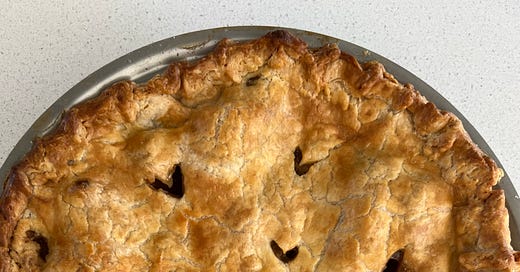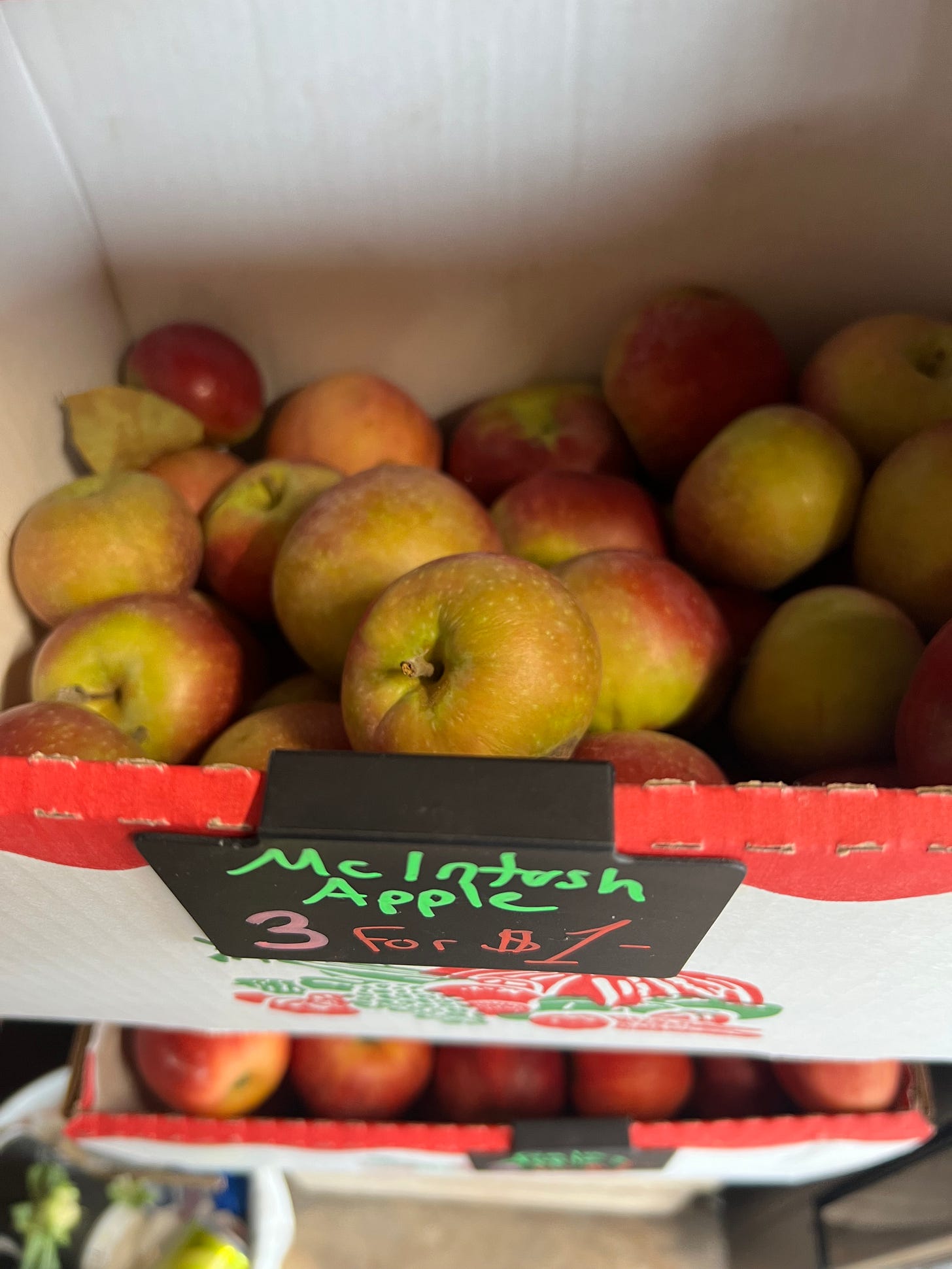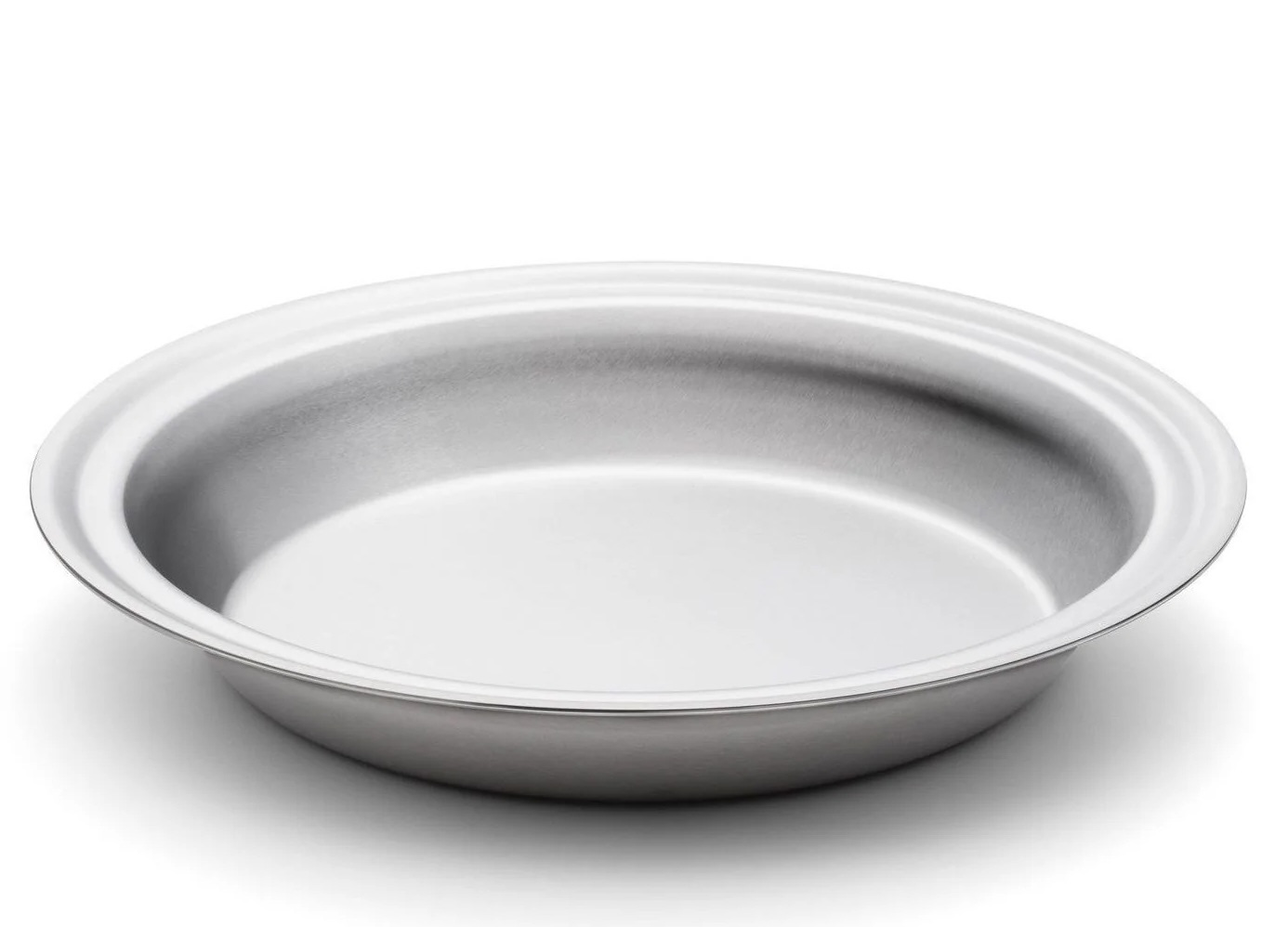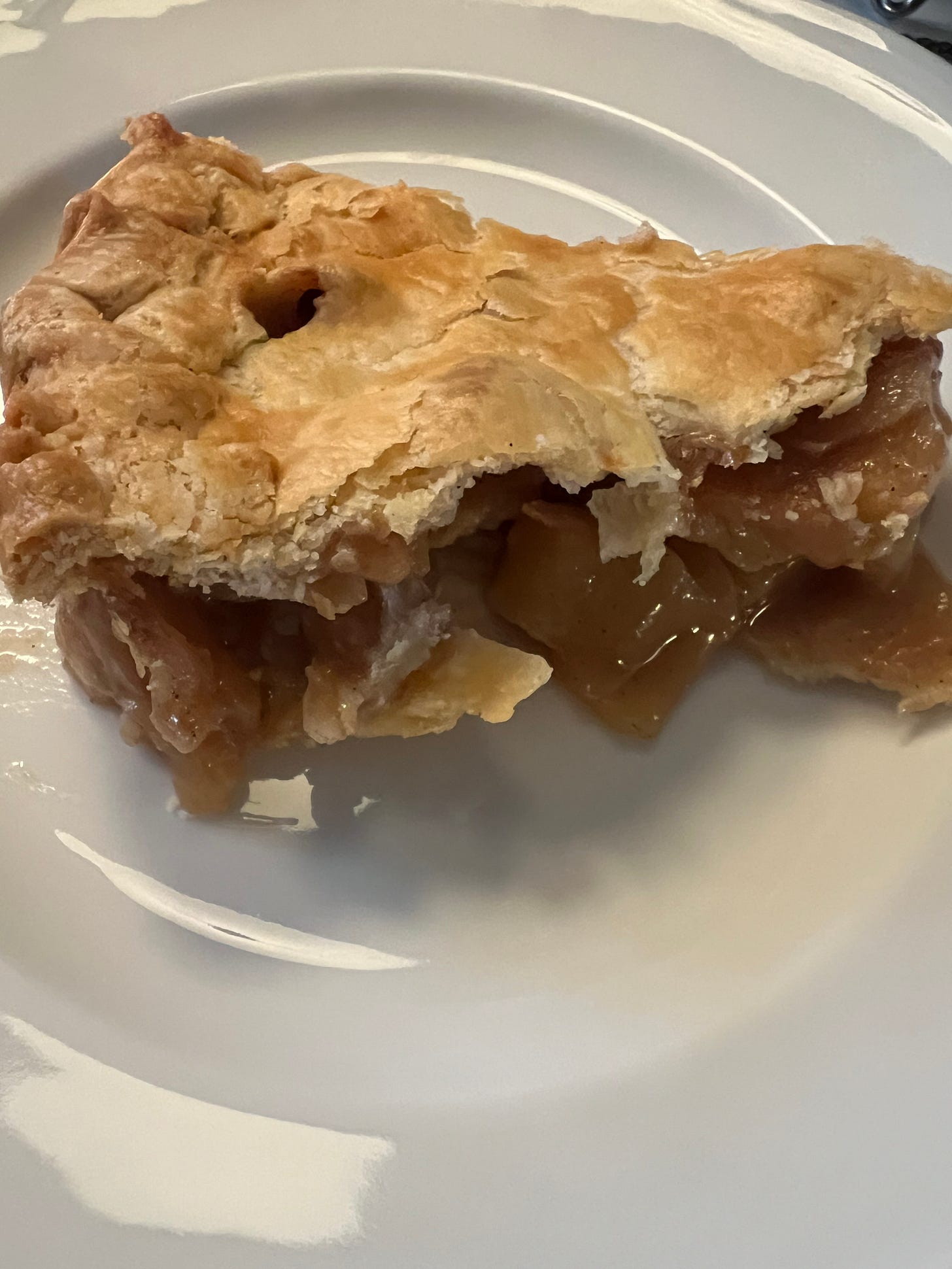Issue #124: Apple Pie Season
A Spy from the North, A Pie Plate Investment, My Apple Pie Technique
As the war between Israel and Hamas continues and the chaos and casualty count rises, it’s hard to focus on work over here. As you know, I’m intimately involved in two projects in Israel: Asif: Culinary Institute of Israel, whose café facilities in Tel Aviv are now being used to prepare meals for displaced families and others in need, and Galilee Culinary Institute in the north, whose construction is slowed while teammates and their relatives are called to fight. I stand with Israel and I stand against the taking of life no matter from which side. I also stand against the war of misinformation and fake news being fought on the Internet in creepy ways reminiscent of Holocaust denial. My friend Leah Koenig, whose substack The Jewish Table, I’ve recommended before, just posted a list of her complex and sometimes contradictory feelings, all of which I could relate to. You can read it here. This is a complicated time in a complicated situation in a complicated place. What is very clear to me is that murder and destruction never occupy a position of moral superiority. —Mitchell
We used to go apple picking most years when I was a child. My father could eat half a bushel of apples himself on a Sunday while watching football. He’d leave the chewed cores around the house, on windowsills, in planters, a kind of scavenger hunt for my mother and the rest of the family once the stopwatch of 60 Minutes began ticking.
We stored the bushels of apples we picked in the garage, a naturally chilly place in a Toronto house in the fall, apple season. They’d keep well, until the first frost, when my mother would set us to work making apple sauce, apple cakes, and apple pies for the freezer.
McIntosh were our eating apple of choice in those days, their flavor a little on the tart side, their flesh fine, white, and crisp when just picked, though it softens quickly and turns to mush when cooked. A perfect McIntosh foams a little in your mouth when you eat it.
But for cooking, my mother preferred Northern Spy.
Large, somewhat ugly, Northern Spy apples have a dull, pale red skin and a firm, yellowish flesh that holds its shape when cooked. I don’t think I’ve ever seen them commercialized in grocery stores, in part I suspect because they are rarely beautiful or perfect. That’s part of their charm. To me, they are the flavor of apple pie. I don’t know who ever decided Golden Delicious were the baking apple of choice—I believe it might have been Julia Child—but they were wrong. That is an apple of last resort.
Last weekend we were up in the Finger Lakes, the center of New York State’s apple production due to the outsized influence Cornell’s ag school and extension have had on apple cultivation. Cornell has its own orchards and a library of some 2,000 varieties.
This was a lousy apple season in the area due to a tragic frost on May 18 that by some accounts decimated more than 70% of the crop. Indian Creek Farm, our local u-pick on Cayuga Lake, had no apples at all to pick this year. But over on Seneca Lake, our friend Karen’s Northern Spy tree produced bushelfuls. She invited me over to pick some apples (and some quince) before we left last weekend. I filled a bag in no time, visions of apple pie in my mind.
I am a kind of purist when it comes to apple pie. I don’t want an unexpected flavor—no ginger or cardamom, thank you very much—or an interesting, whole-grain crust. No nuts or raisins, either. Sure, I’ll eat these creative variations. But if I’m making an apple pie, elemental is what I’m after.
I’ve never used a recipe for apple pie. I start with plenty of apples, more than I think I’ll need. They shrink impressively. I peel, core, and slice them into a large bowl. I toss them with brown sugar, some flour, cinnamon, and vanilla. Then I pile them high into a large, metal pie plate lined with my favorite crust (see Issue #11). I dot the apples with butter, top them with a second crust, seal the edges, and poke holes for the steam to escape. A brushing of egg wash and into a hot oven for much longer than anyone ever tells you, an hour and 15 minutes, or there abouts, so the apples soften and the crust crisps.
I use one and only one pie plate for my apple pie, a 9-inch 360 Cookware metal pan by AmeriCraft that is sturdy, deep, and has a wide rim. It is relative expensive (more than $100), but worth it if you plan on baking American–style pies with any regularity. The thick metal conducts heat well, the wide rim provides support for pretty edges, and the depth means you get a substantial piece of pie. This pan will improve your apple pie game, guaranteed.
Using my technique and that pan, from Karen’s Northern Spies I made a picture-perfect apple pie that tasted as delicious as it looked. The only improvement I could have made was I could have used even more fruit, as the filling shrank more than I would have liked. But that just increased the ratio of crust to filling, which isn’t a bad thing.
I’m not going to give you a precise recipe, because as I said, I don’t ever use one. But don’t let that stop you from giving this a try. Do as I say and you will make a delicious apple pie, especially if you can get your hands on some Northern Spies.
RECIPE: Mitchell’s Apple Pie
1 recipe flaky butter pie crust, divided into two disks, one slightly bigger than the other, chilled (see Issue #11 for my foolproof recipe)
About 10 Northern Spy apples, peeled
1/4 to 1/2 cup brown or white sugar, depending on your sweet tooth and the sweetness of the apples
3 heaping tablespoons all-purpose flour, about 1/3 cup, or more
1 teaspoon ground cinnamon
1 teaspoon vanilla extract or paste
Pinch salt
1 tabelspoon or so unsalted butter
Egg wash made from 1 egg beaten with 1 tablespoon water and a pinch of salt
Preheat the oven to 425°F. On a floured worksurface, roll out the larger disk of pastry into a circle just a little bigger than the pie plate, including its depth and the rim, about 14 inches in diameter. Be sure there are no holes or cracks, patching any that form. Drape the crust on the rolling pin and transfer it to the plate so that it hangs over the edge. Place the pan in the fridge for the crust to chill while you prepare the apples.
Quarter the peeled apples and remove the core. Slice the apples thinly into a large mixing bowl. It should look like too many for your pie plate. Add the sugar, flour, cinnamon, vanilla, and salt, and toss to evenly distribute and coat the apples.
Remove the pie plate from the fridge. Pile the apples into the pastry-lined pan, mounding them toward the center and packing the down. Roll out the smaller circle of the dough just large enough to cover the pie, about 10 inches in diameter. Transfer the crust to the top of the pie. Fold the edges of the overhanging dough from the bottom crust over the edges of the top crust to seal. Pinch with your fingers or the tines of a fork dipped in flour to form a pretty, fluted edge. Cut a few slits in the top crust to let the steam out and brush the entire crust lightly with egg wash, including the fluted edge. Don’t let the egg pool anyplace.
Bake in the preheated oven for about 40 minutes, until the top begins to brown. Turn down the heat to 375°F. and bake another 20 minutes, then turn down the heat again to 350°F and bake 15 minutes more. The crust should be nicely brown and obviously flakey and you should have some evidence the filling is boiling. Remove the pie to a wire rack to cool completely for about 2 hours before serving. The pie will keep covered 3 or 4 days at room temperature, the crust remaining crisp and delicious.








I have never made a pie. The gods are telling me this is the one!
Apple---Tree